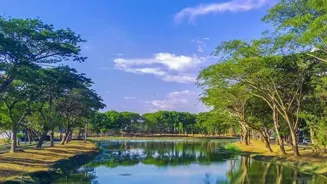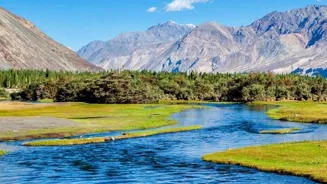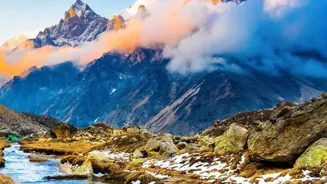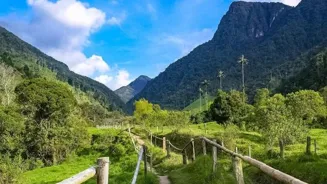Explore 10 Breathtaking National Parks in India, revealing a world of diverse landscapes and wildlife wonders
India, a land of vibrant culture and diverse landscapes, boasts a treasure trove of national
parks. These protected areas offer a glimpse into the country's rich biodiversity, from the snow-capped Himalayas to the lush green forests of the south.
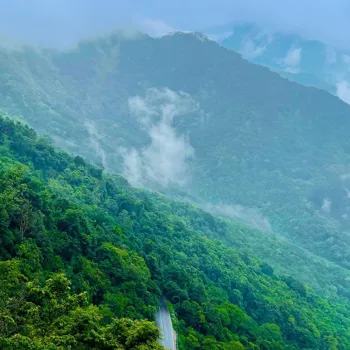
For the travel enthusiast seeking adventure and a connection with nature, exploring these national parks is an experience of a lifetime. Let's embark on a virtual journey to discover ten of the most breathtaking national parks in India.
Jim Corbett National Park, Uttarakhand: A Tiger's Domain:
Established in 1936, Jim Corbett National Park holds the distinction of being India's oldest national park. Named after the renowned hunter and conservationist Jim Corbett, this park is a haven for the majestic Bengal tiger.
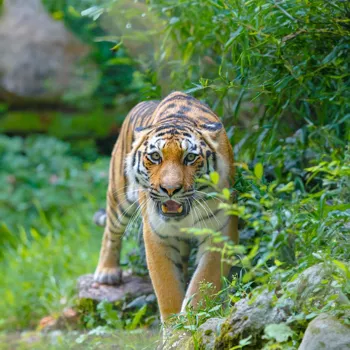
Nestled in the foothills of the Himalayas, the park's landscape is characterized by dense forests, gushing rivers, and sprawling grasslands. Embark on a thrilling jeep safari to spot tigers, elephants, deer, and a variety of bird species.
Don't miss the opportunity to visit the Corbett Museum, which showcases the life and works of Jim Corbett. Permits are essential and need to be booked well in advance, especially during peak season. The best time to visit is between November and June.
Consider staying at one of the forest rest houses for an immersive experience. Remember to respect the park's rules and maintain a safe distance from the wildlife to ensure a memorable and responsible visit.
Kaziranga National Park, Assam: Home of the One-Horned Rhino:
Kaziranga National Park, a UNESCO World Heritage Site, is renowned for its population of the one-horned rhinoceros. Located in the floodplains of the Brahmaputra River, the park's landscape is a mosaic of grasslands, swamps, and dense forests.
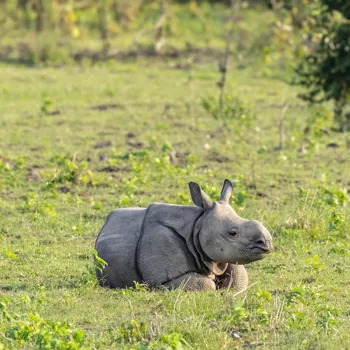
Apart from the rhinoceros, Kaziranga is home to elephants, tigers, wild buffaloes, and a variety of bird species, including migratory birds that flock here during the winter months. Explore the park on an elephant safari for a unique perspective of the landscape and its wildlife.
Jeep safaris are also available. The park is open from November to April. Be sure to carry insect repellent and wear appropriate clothing to protect yourself from the elements. The sight of a rhino grazing in its natural habitat is an unforgettable experience.
Respecting the habitat and maintaining silence during safaris enhances the chances of wildlife sightings.
Bandhavgarh National Park, Madhya Pradesh: Tiger Territory:
Bandhavgarh National Park in Madhya Pradesh is known for its high density of tigers. The park's landscape features a mix of dense forests, rocky hills, and grasslands.
Legend has it that Lord Rama gifted this fort "Bandhavgarh" to his brother Laxmana hence an ancient fort stands tall within the park, adding to its historical and cultural significance. The park is divided into different zones, each offering a unique wildlife experience.
Take a jeep safari to explore the park and spot tigers, leopards, deer, and a variety of bird species. Visit the Bandhavgarh Fort for panoramic views of the surrounding landscape. The best time to visit is between October and June.
Book your safaris and accommodation well in advance, especially during peak season. Remember to follow the instructions of your guide and maintain a safe distance from the wildlife
Gir National Park, Gujarat: Abode of the Asiatic Lion:
Gir National Park in Gujarat is the only place in the world where you can find the Asiatic lion. The park's landscape is characterized by dry deciduous forests, grasslands, and rocky hills. The park is also home to leopards, deer, crocodiles, and a variety of bird species.
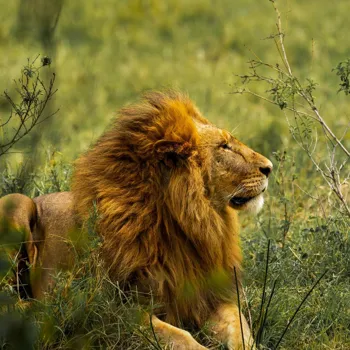
Take a jeep safari to explore the park and spot the magnificent Asiatic lion. Visit the Devalia Safari Park for a guaranteed sighting of lions in a controlled environment. The park is open from mid-October to mid-June.
Remember to respect the park's rules and maintain a safe distance from the wildlife. The conservation efforts in Gir have helped the Asiatic lion population thrive, making it a success story in wildlife conservation.
Periyar National Park, Kerala: A Tropical Paradise:
Periyar National Park in Kerala is a haven for wildlife and nature lovers. Situated in the Western Ghats, the park's landscape is characterized by dense evergreen forests, grasslands, and the scenic Periyar Lake. The park is home to elephants, tigers, leopards, deer, and a variety of bird species.
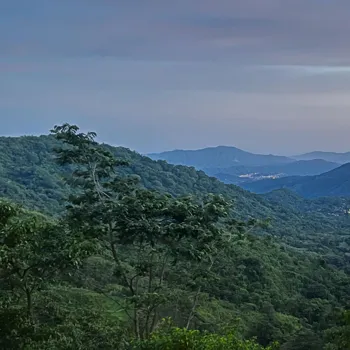
Take a boat safari on Periyar Lake for a unique perspective of the park and its wildlife. Trekking and bamboo rafting are also popular activities. The best time to visit is between September and May. The cool climate and lush greenery make Periyar a refreshing escape from the heat.
Remember to wear comfortable shoes and carry insect repellent for your trek. The spice plantations surrounding the park offer a glimpse into Kerala's rich agricultural heritage.
Kanha National Park, Madhya Pradesh: The Inspiration for "The Jungle Book":
Kanha National Park is another gem in Madhya Pradesh, famed for its tiger conservation efforts and its association with Rudyard Kipling's "The Jungle Book". This park features sprawling grasslands, dense forests of sal and bamboo, and meandering streams.
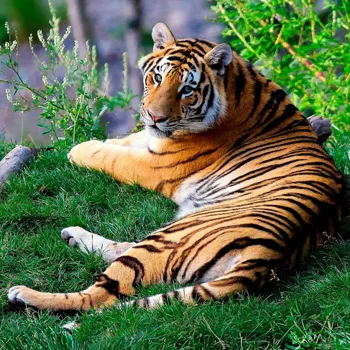
It's home to the barasingha (swamp deer), a species that Kanha has successfully brought back from the brink of extinction. Jeep safaris are the best way to spot tigers, leopards, wild dogs, and a variety of deer species. The park is open from October to June.
The landscape of Kanha, with its rolling meadows and dense forests, creates a magical atmosphere.
Ranthambore National Park, Rajasthan: Tigers Amidst History:
Ranthambore National Park in Rajasthan offers a unique blend of history and wildlife. The park's landscape is characterized by dry deciduous forests, rocky hills, and the majestic Ranthambore Fort, which dates back to the 10th century. The fort provides a stunning backdrop for wildlife sightings.
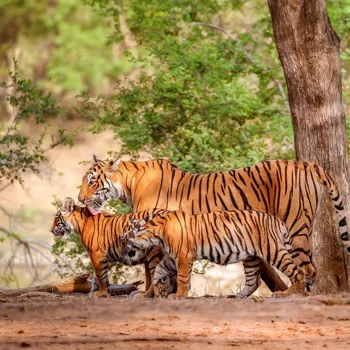
The park is home to tigers, leopards, deer, and a variety of bird species. Take a jeep safari to explore the park and spot tigers against the backdrop of the ancient fort. The best time to visit is between October and June. The fort adds a historical dimension to the wildlife experience.
Sundarbans National Park, West Bengal: The Mangrove Kingdom:
Sundarbans National Park, a UNESCO World Heritage Site, is a unique ecosystem of mangrove forests located in the Ganges delta.
This park is the largest mangrove forest in the world and is home to the elusive Bengal tiger, along with a variety of other wildlife, including crocodiles, snakes, and birds. Explore the park on a boat safari through the intricate network of waterways.
The best time to visit is between September and March. The unique ecosystem of the Sundarbans is a testament to the power of nature. The boat safaris offer a glimpse into the lives of the people who depend on the mangrove forests for their livelihoods.
Great Himalayan National Park, Himachal Pradesh: A High-Altitude Paradise:
Great Himalayan National Park, a UNESCO World Heritage Site, protects a vast expanse of the western Himalayas. The park's landscape is characterized by alpine meadows, coniferous forests, and snow-capped peaks. It is home to a variety of wildlife, including snow leopards, brown bears, and musk deer.
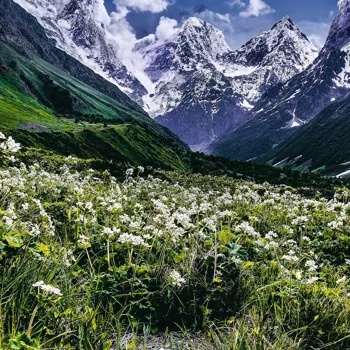
Trekking is the best way to explore the park and experience its pristine beauty. Permits are required for trekking and camping. The best time to visit is between April and November. The high-altitude landscape of the Great Himalayan National Park offers breathtaking views.
The park is a haven for birdwatchers, with a variety of Himalayan species.
Eravikulam National Park, Kerala: The Neelakurinji Blooms:
Eravikulam National Park in Kerala is famous for the Neelakurinji flowers, which bloom once every twelve years, blanketing the hills in a sea of blue. The park is also home to the Nilgiri Tahr, an endangered mountain goat. The landscape is characterized by rolling grasslands and shola forests.
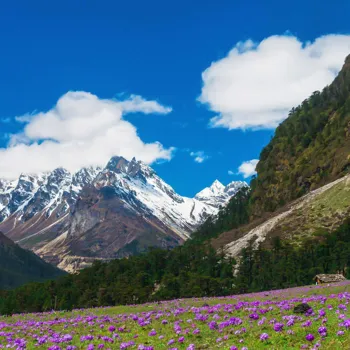
The best time to visit is between September and May, although the Neelakurinji blooms are a once-in-a-lifetime spectacle. The park offers stunning views of the surrounding hills. The Nilgiri Tahr is a unique and fascinating animal to observe in its natural habitat.
AI Generated Content. Glance/InMobi shall have no liability for the content